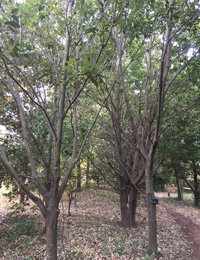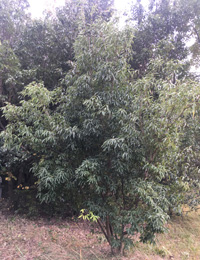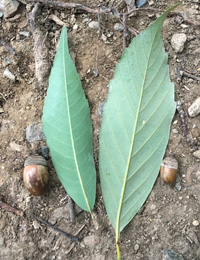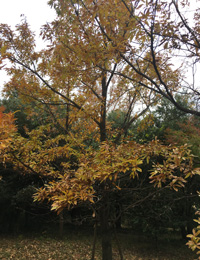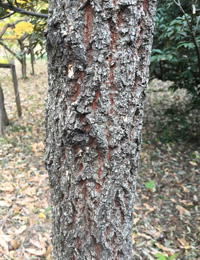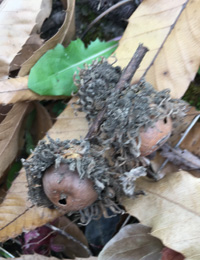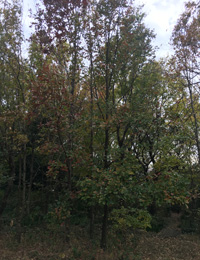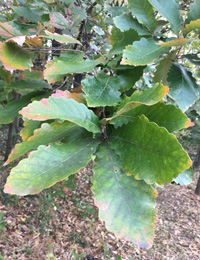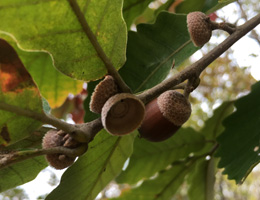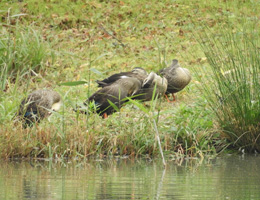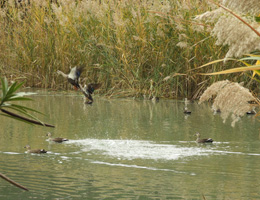Also known as the Itajii Chinkapin, Castanopsis sieboldii is native to southern Japan, but rare in eastern Japan. Despite being located in Gunma Prefecture, our biotope is fortunate in having three of these trees. A lot of acorns were found among the fallen leaves.
Biotope Quarterly No.7
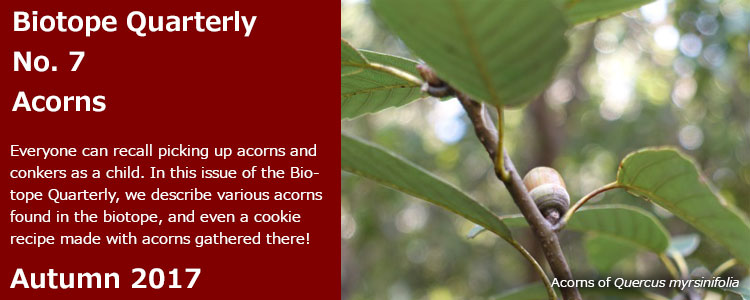
What are donguri?
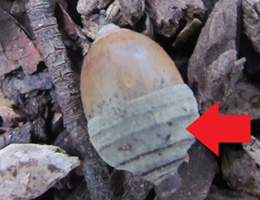
Seeds of Quercus myrsinifolia.
Arrow indicates the cupule.
The Japanese word donguri has no exact equivalent in English. It refers to the nuts of some species of the subfamily Quercus and the subfamilies of Beechaceae, including acorns. They have a cupule (a cup-shaped cap) covering a part or the whole of the nut, and a very hard brown skin.
In Japan's satoyama (cultivating woodland), acorns have been used as food for a long time. Carbonized acorns have been found among pottery shards at archeological sites dating to the Jomon era. For Japanese people, donguri are a familiar feature of local cuisine and folk crafts, such as in the song "Donguri Koro-koro."
Chestnuts are perhaps better known in the West. The chestnut tree belongs to a subfamily of Fagaceae, and has a shell, so it would seem to be a type of donguri, but in fact chestnuts are called kuri in Japanese. Perhaps the main difference is that chestnuts are tastier!
Nuts & Biodiversity
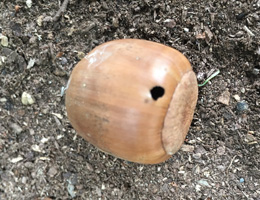
An acorn with a hole pierced in it by an insect
When you pick up acorns, you may notice that some of them have small holes and are empty inside. Various insects lay their eggs inside them. Sometimes larvae eat their way into the acorn from the germinated soft part. So donguri serve as life-support systems for a lot of insects.
Acorns are also an important nutrient source in winter, not only for small animals such as birds, rats, squirrels, but also for larger animals such as monkeys, wild boars and deer. Even bears may climb trees before winter comes and collect nuts by shaking the branches. If you find a place where many boughs are bent high up in the trees, bears may be nearby, so it would be wise to quietly leave!
Nuts & Seeds of the Biotope
Quercus Glauca, Quercus Myrsinifolia
Many of the species commonly referred to as "oaks" in Japan are evergreens in the genus Quercoideae. Their hard wood is used frequently for building houses and furniture. Their acorns are the familiar little brown nuts with "caps." An interesting note is that these trees are the ones called live oaks in English, while English oaks are deciduous trees, with leaves that seem to have "fingers."
Left: Quercus Glauca
Middle: Quercus Myrsinifolia. This is a young tree so it is not tall.
Right: This picture shows the leaves and acorns of Quercus Glauca (left) and Quercus Myrsinifolia (right). Quercus Glauca's leaves are more slender, while the leaves of Quercus Myrsinifolia look slightly yellow on the back
Castanopsis sieboldii, Lithocarpus edulis
These trees, which are collectively referred to as chinkapins, both belong to the family Fagaceae. Castanopsis sieboldii acorns are completely covered with their shells. Depending on the species, you can even eat them raw. These trees are closely associated with the satoyama. They are found in warm areas in Japan, so there are not many in the biotope, which is located in chillier Gunma Prefecture.
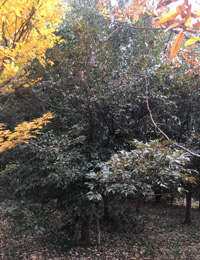
Castanopsis sieboldii
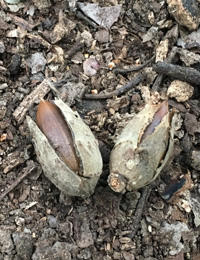
Its acorns
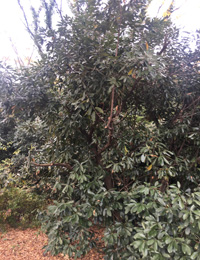
Lithocarpus edulis
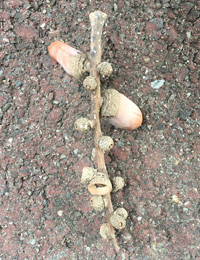
Its acorns
Sawtooth Oak, Quercus Serrata, Quercus Crispula
Whereas chinkapins and live oaks are evergreens, these trees are deciduous. The sawtooth oak's acorn seems to have dreadlocks. Meanwhile, the acorns of Quercus serrata are similar in shape to a large Buddha's head. Since last year, we've been raising shiitake mushrooms in the biotope using the logs of these trees. We plan to start harvesting them as early as the autumn of 2018.
Left: Sawtooth oak
Middle: The trunk of the sawtooth oak is very rough.
Right: Sawtooth oak acorns
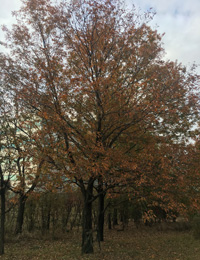
Quercus serrata
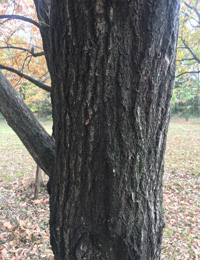
Its trunk is smoother
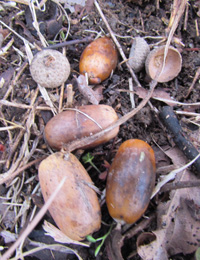
Its acorns
Left: Quercus crispula. This is a tree that usually grows in cold climates and on mountains. But when we began our biotope development we did not know that, so we planted some trees such as Quercus crispula that are slightly out of place in our local environment.
Middle: Its leaves.
Right: Its acorns.
Can You Eat Them?
Acorns contain bitter tannins, and even those acorns said to be edible must be "leached" to remove the tannins. However, Castanopsis sieboldii oak acorns are said to be easier to eat. We gathered some and tried preparing them in various ways.
Gathering Our Ingredients
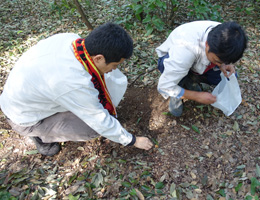
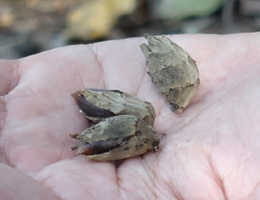
Some of the acorns fell in their shells. The unique shape of these shells makes removing them easy. The acorns that fell without their shells seemed to be darker in color than the others, although there was some individual variation.
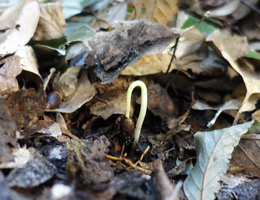
This acorn is germinating.
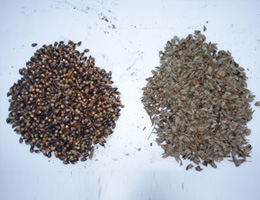
Acorns (left) and their shells (right.) Even children can easily shell them.
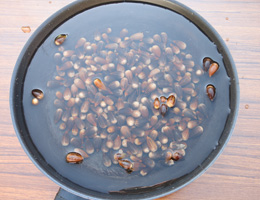
We filled a pot with water and added the acorns. The ones that have been eaten by insects float to the top, so they can be identified and removed.
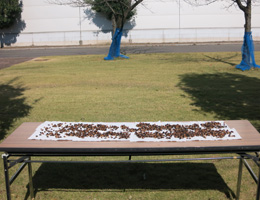
We dried the good ones. The weather was good, so it only took 30 minutes in the sun.
Raw, Boiled, or Roasted?
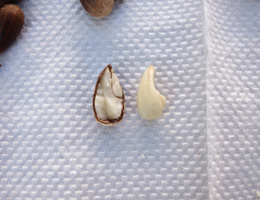
First we tried eating them raw.
Because the skins are so hard, you'd risk breaking a tooth.
As for the taste? Edible, but our honest impression was that we didn't want to eat more than three or four in a row.
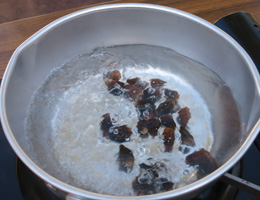
Next we tried boiling them. Here they are in a pan of boiling water.
After 5 minutes, they were still a bit hard and not much different from the raw ones.
After 10 minutes, the taste and aroma improved slightly. Now we could call them food.
After 20 minutes, they got soggy, and the taste and smell deteriorated.
In any case, boiled acorns are a little better than raw ones.
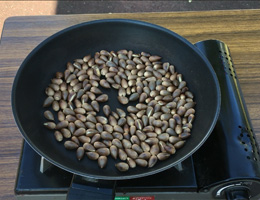
Next, we tried roasting them in a dry frying-pan.
After approximately 5 minutes, they began to smell fragrant. We heard them crackling and popping, and acorns began to jump out of the frying-pan like popcorn!
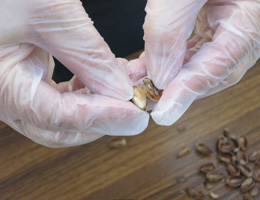
Roasted acorns could easily be shelled by an adult.
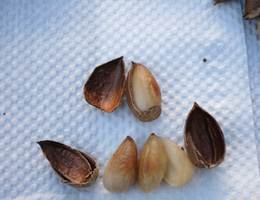
The roasted acorns and their shells. Their taste and fragrance were notably better than the boiled or raw version. You could snack on these in front of the TV.
Making Donguri Cookies
Having shelled the acorns, it was time to try making cookies with them.
Ingredients
| Acorns | 100 g (shelled weight) |
|---|---|
| Flour | 50 g |
| Sugar | 25 g |
| Egg white | 1 |
| Butter | 10 g |
1.Powder the acorns in a food processor or blender.
The finer the powder, the better the texture. This time it took about 6 minutes to make 100g of acorns into a moderately fine powder. My hand got tired and it was painful, but I kept at it.
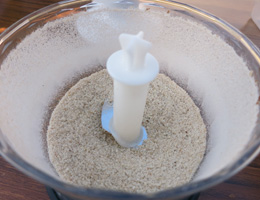
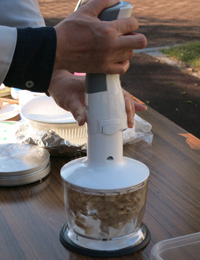
2.Make the dough.
We put the sugar, egg white, and butter into a plastic bag and kneaded it all up, then added the acorn powder and flour.
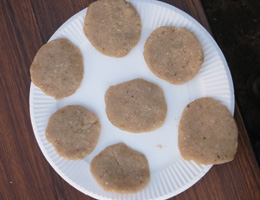
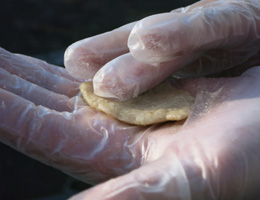
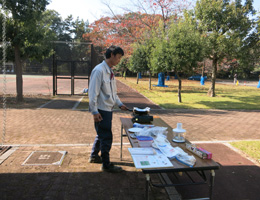
3.Form the dough into cookie shapes.
We fried these cookies in a frying-pan. We used greaseproof paper to avoid having to wash up afterwards, and made a lid for the frying-pan out of foil.

4.We flipped them from time to time until they were done. This picture shows half of the recipe.
Eat. Whoa, these were GOOD!
They had a unique aroma and taste due to the acorns, and just the right amount of sweetness.
The next day, they got a bit hard, but the taste was still good, and they all vanished quickly.
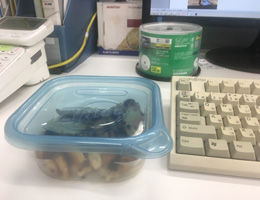
5.I polished the cookies off while writing this article.
Tips for Making Acorn Cookies
- The use of a food processor or blender is recommended!
The finer the powder the better the texture. This experience made me admire the people of the Jomon period who had to grind acorns using stones and the like.
- Peeling is the hardest part.
Although roasting makes them somewhat easier to peels, this part takes the most time and labor during the process of making acorn cookie. I recommend you gather some friends and talk as you work.
- Soften the butter first
Since it is hard to mix when cold, take it out of the refrigerator and return it to room temperature beforehand.
- Eat them fast
As time goes on they get harder.
Extra: Ducks Have Arrived At the Biotope
Like last year, ducks arrived at the biotope pond in autumn. Their numbers increased gradually in November, and we counted more than 50 birds as of November 20. Most of them are Indian spot-billed ducks, but if this year follows the pattern of last year, the Eurasian teal will also arrive soon, and ultimately we expect to see nearly 100 birds on the pond.
